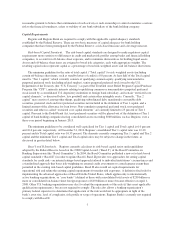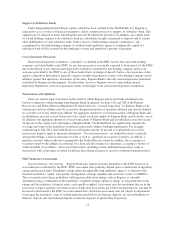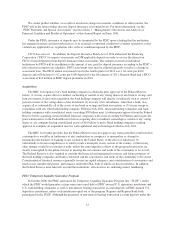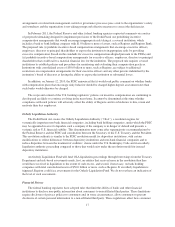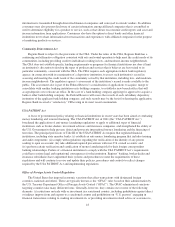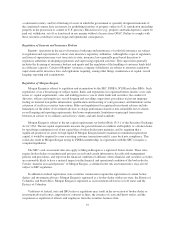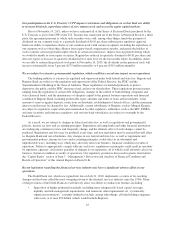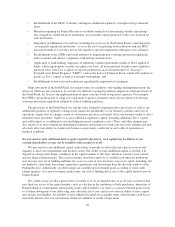Regions Bank 2010 Annual Report Download - page 31
Download and view the complete annual report
Please find page 31 of the 2010 Regions Bank annual report below. You can navigate through the pages in the report by either clicking on the pages listed below, or by using the keyword search tool below to find specific information within the annual report.arrangements or related risk-management control or governance processes pose a risk to the organization’s safety
and soundness and the organization is not taking prompt and effective measures to correct the deficiencies.
In February 2011, the Federal Reserve and other federal banking agencies requested comments on a notice
of proposed rulemaking designed to implement provisions of the Dodd-Frank Act prohibiting incentive
compensation arrangements that would encourage inappropriate risk taking at a covered institution, which
includes a bank or bank holding company with $1.0 billion or more of assets, such as Regions and Regions Bank.
The proposed rule (i) prohibits incentive-based compensation arrangements that encourage executive officers,
employees, directors or principal shareholders to expose the institution to inappropriate risks by providing
excessive compensation (based on the standards for excessive compensation adopted pursuant to the FDIA) and
(ii) prohibits incentive-based compensation arrangements for executive officers, employees, directors or principal
shareholders that could lead to a material financial loss for the institution. The proposed rule requires covered
institutions to establish policies and procedures for monitoring and evaluating their compensation practices.
Institutions with consolidated assets of $50.0 billion or more, such as Regions, are subject to additional
restrictions on compensation arrangements for their executive officers and any other persons indentified by the
institution’s board of directors as having the ability to expose the institution to substantial losses.
In addition, on January 12, 2010, the FDIC announced that it would seek public comment on whether banks
with compensation plans that encourage risky behavior should be charged higher deposit assessment rates than
such banks would otherwise be charged.
The scope and content of the U.S. banking regulators’ policies on incentive compensation are continuing to
develop and are likely to continue evolving in the near future. It cannot be determined at this time whether
compliance with such policies will adversely affect the ability of Regions and its subsidiaries to hire, retain and
motivate their key employees.
Orderly Liquidation Authority
The Dodd-Frank Act creates the Orderly Liquidation Authority (“OLA”), a resolution regime for
systemically important non-bank financial companies, including bank holding companies, under which the FDIC
may be appointed receiver to liquidate such a company if the company is in danger of default and presents a
systemic risk to U.S. financial stability. This determination must come after supermajority recommendations by
the Federal Reserve and the FDIC and consultation between the Secretary of the U.S. Treasury and the President.
This resolution authority is similar to the FDIC resolution model for depository institutions, with certain
modifications to reflect differences between depository institutions and non-bank financial companies and to
reduce disparities between the treatment of creditors’ claims under the U.S. Bankruptcy Code and in an orderly
liquidation authority proceeding compared to those that would exist under the resolution model for insured
depository institutions.
An Orderly Liquidation Fund will fund OLA liquidation proceedings through borrowings from the Treasury
Department and risk-based assessments made, first, on entities that received more in the resolution than they
would have received in liquidation to the extent of such excess, and second, if necessary, on bank holding
companies with total consolidated assets of $50.0 billion or more, such as Regions. If an orderly liquidation is
triggered, Regions could face assessments for the Orderly Liquidation Fund. We do not yet have an indication of
the level of such assessments.
Financial Privacy
The federal banking regulators have adopted rules that limit the ability of banks and other financial
institutions to disclose non-public information about consumers to non-affiliated third parties. These limitations
require disclosure of privacy policies to consumers and, in some circumstances, allow consumers to prevent
disclosure of certain personal information to a non-affiliated third party. These regulations affect how consumer
17


